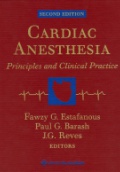Inelasticity Of Materials: An Engineering Approach And A Practical Guide
Srinivasa Arun R,Srinivasa Sivakumar M
ISBN: 9789812837493
Vydavatelství: World Scientific
Rok vydání: 2009
Vazba: Hardback
Počet stran: 572
Dostupnost: Skladem
Původní cena: 3 511 Kč
Výstavní cena:
3 160 Kč(t.j. po slevě 10%)
(Cena je uvedena včetně 10% DPH)
Katalogová cena: 95 GBP
Nárok na
dopravu zdarma
Termín dodání na naši pobočku v Brně je přibližně 3-4 týdny.
With the advent of a host of new materials ranging from shape memory alloys to biomaterials to multiphase alloys, acquiring the capacity to model inelastic behavior and to choose the right model in a commercial analysis software has become a pressing need for practicing engineers. Even with the traditional materials, there is a continued emphasis on optimizing and extending their full range of capability in the applications. This textbook builds upon the existing knowledge of elasticity and thermodynamics, and allows the reader to gain confidence in extending one's skills in understanding and analyzing problems in inelasticity. By reading this textbook and working through the assigned exercises, the reader will gain a level of comfort and competence in developing and using inelasticity models. Thus, the book serves as a valuable book for practicing engineers and senior-level undergraduate/graduate-level students in the mechanical, civil, aeronautical, metallurgical and other disciplines.The book is written in three parts. Part 1 is primarily focused on lumped parameter models and simple structural elements such as trusses and beams. This is suitable for an advanced undergraduate class with just a strength of materials background. Part II is focused on small deformation multi-dimensional inelasticity and is suitable for a beginning graduate class. Sufficient material is included on how to numerically implement an inelastic model and solve either using a simple stress function type of approach or using commercial software. Case studies are included as examples. There is also an extensive discussion of thermodynamics in the context of small deformations. Part III focuses on more advanced situations such as finite deformation inelasticity, thermodynamical ideas and crystal plasticity. More advanced case studies are included in this part.• This textbook takes a new, task- or scenario-based approach to teaching and learning inelasticity. The book is written in an active learning style that appeals to engineers and students who wish to design or analyze structures and components that are subject to inelasticity.• The book incorporates thermodynamical considerations into the modeling right from an early stage. Extensive discussions are provided throughout the book on the thermodynamical underpinnings of the models.• This textbook is the first to make extensive use of MATLAB to implement many inelasticity models. It includes the use of concepts such as Airy stress functions to solve plane problems for inelastic materials. The MATLAB codes are listed in the appendix for one to modify with their own models and requirements.• Step-by-step procedures for formulations and calculations are provided for the reader to readily adapt to the inelastic problems that he or she attempts to solve.• A large number of problems, exercises and projects for one to teach or learn from are included. These can be assigned as homework, in-class exercises or projects.• The book is written in a modular fashion, which provides adequate flexibility for adaptation in classes that cater to different audiences such as senior-level students, graduate students, research scholars, and practicing engineers.
